The Main Group Of Tarot Symbols
The following article is an overview of the main groups of Tarot symbols, their meaning will relate to all the elements in the group. The focus of the article is on general content and differences in a topic.
Menu of Contents
1. Plant Tarot symbols
Trees, flowers, fruit, herbs
Organic creatures and human nature are considered states of medieval souls: vegetative, sensory and rational. People and animals share souls together with plants, which include the most basic life energy and the ability to grow and regenerate. Plants exhibit a seasonal life cycle: seeds, germination, development, fruit production, decomposition and return to seed. Seeds are opportunities to be nurtured.
Lush growth shows physical strength and wealth while flowers and fruits are the bloom of potential and the fruit of one’s labor. As food and medicine, plants are also nutritious and promote health but can also bring about death. The scent of plants is their most elegant element, which affects people’s emotions and will rise to heaven. If they are sweet, the gods will be satisfied and therefore, they are messengers of prayers and pleas.
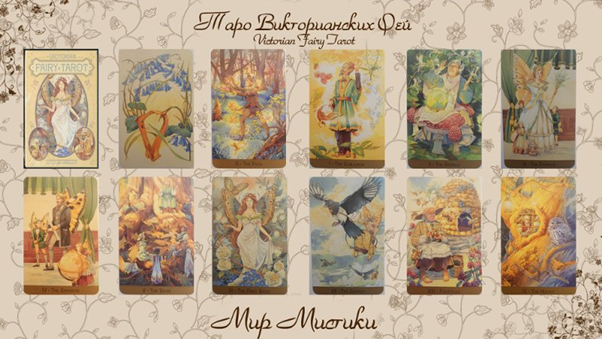
Plants stand out in many legends and their meanings can be found through stories. Roses and lilies symbolize the aspiration of the soul (red) and purity (white) while Lotus emerges from the mud to welcome the shining of the sun. The tree represents the human spine and connects the earth to heaven with an endurable power. Ivy represents immortality and long-term success or fame when made into wreaths. Apples are alluring and pomegranates represent fertility, prosperity, season, and plenty. In the mysterious rituals of the ancient Eleusis, a barley branch symbolizes rebirth. The garden can be the womb, prosperity, protection, beauty or nurturing.
2. Animal Tarot symbols
Lion, Camel, Cat, Dog, Horse, Wolf, Bird, Fish, Snake, Crustacean
Animals are considered having two of the three states of medieval souls: vegetation and feeling (or perception). The perception of the soul is perceived through the five senses that combine feelings and emotions. In Tarot symbols, animals often represent high-level tactile, intuition and instinct, effort and ambition, and the specific abilities or features of the depicted animals. You may need those things to complete a job rather than only reason. There can be wild animals or home pets, the animal that lacks restraint or taming, myths (like sphinxes or dragons) or normal ones (like dogs).
Birds are free spirits and messengers from heaven; they see distant things and sing sincere songs (even when they bring an omen of illness). The feather associated with Ma’at, ancient justice God of Egypt; in addition, it also symbolizes the glory and lightness of the soul. Snakes and reptiles are considered cunning but sometimes, they represent the deep intellect of the subconscious. A lion can swallow you alive due to its anger or hunger but also symbolizes the sun’s mighty, courage and royalty. The camel filled with water from the oases which you can ride across the arid lands. Wolves are terribly voracious and crafty.
Tarot symbols imply that dogs are loyal companions and alert you to dangers, but sometimes, they grab or chase you. Cats represent sharp intuition and a mysterious ego. They are sentimental, flexible, active, and independent. The horse is vitality (horsepower) that can transport, expand and lift you. Fish are abundance, subconscious like water, and dreams are given. Crustaceans (crabs, lobsters, shrimps) are bottom-dwelling creatures, eating corpses and rotting materials, in a process of water purification. They depict the physiological waste digestion in the subconscious and the metabolism of purification and evolutionary development.
3. Human Tarot symbols
Men, Women, Children, Royal Family, Clergy, Traders, Farmers, Craftsmen, Soldiers, Beggars, Disabled People
Human Tarot symbols always show different parts of the ego and what they are doing. They can refer to anyone in your life or the role held by many people, sort of like the boss, the “poor man”, or the activities of those people. They can be a teacher or instructor to guide you about unfulfilled potentials. The person’s age indicates the state of life or the level of growth and development. A child represents innocence and new beginnings as well as immaturity and irresponsibility – a student or Ph.D. student. Maybe, it is a naive ego or your inner child.
Men and women in cards represent masculine and feminine traditions and are not necessarily the biological gender of that character. Some personalities can be controlled and according to Jung’s psychology, they represent the so-called anima (inner femininity), animus (inner masculinity) and hidden sides (cannot be perceived by awareness). Elderly people may refer to old-fashioned traditions, but often express wisdom, guidance, and liberation from worldly concerns. The royal family symbolizes power, sovereignty, leadership, responsibility, mastery, and divine righteousness, which can also be a dictatorship.
Tarot symbols of religion refer to wisdom, conscience, and spiritual guidance but sometimes, are dogmas. Traders are prosperity, trade, circulation of goods and resources. Craftsmen use those resources, and they represent the apprenticeship or refinement, skills, and production. The farmer serves others and works on the land. A warrior is usually a noble or royal aristocracy, using agitation, attack, and defense forces. Beggars and disabled people show emotional, rational, and physical injuries; also pain, poverty, imbalance, distraction, and alienation.
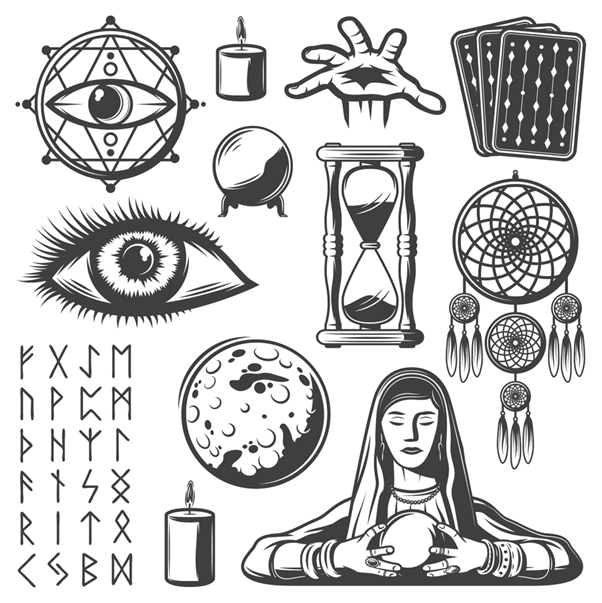
Human Tarot symbols play a significant role in Tarot readings, representing the diverse aspects of human nature, experiences, and archetypes. These symbols provide a lens through which we can explore the complexities of the human condition, offering insights, guidance, and reflection on our own journeys and interactions with others. By delving into the realm of Human Tarot symbols, we gain a deeper understanding of ourselves and the interconnectedness of all humanity.
The Human Tarot symbols encompass a range of archetypes, personalities, and states of being. Each card in the Tarot deck depicts different individuals or groups, showcasing the myriad facets of human existence. These symbols invite us to reflect on our own behaviors, emotions, and relationships, ultimately aiding us in our quest for self-discovery and personal growth.
The Major Arcana of the Tarot deck includes several prominent Human Tarot symbols that hold immense significance. The Fool represents the journey of the seeker, embodying innocence, curiosity, and new beginnings. The Magician symbolizes the power of manifestation and utilizing one’s skills and resources to create change. The High Priestess represents intuition, inner wisdom, and the depths of the subconscious mind. These archetypal figures serve as guides, illuminating various aspects of the human experience and inviting us to reflect on our own paths.
The Court Cards within the Tarot deck also encompass Human Tarot symbols, representing different personality types and roles within society. The King symbolizes authority, leadership, and maturity, while the Queen embodies nurturing, intuition, and emotional depth. The Knight signifies action, courage, and a quest for adventure, while the Page represents youthful enthusiasm, curiosity, and a desire to learn. These symbols prompt us to explore different aspects of our own personalities and consider how they manifest in our lives.
In addition to these specific cards, the overall imagery and symbolism within the Tarot deck often depict human experiences and emotions. The cards capture moments of joy, sorrow, love, and conflict, presenting a tapestry of human existence. They reflect the universal themes and struggles we all encounter, allowing us to connect with the collective human experience.
When interpreting Human Tarot symbols, it is crucial to consider the context of the reading, the placement of the cards, and their interactions within the spread. These symbols serve as mirrors, reflecting back to us our own strengths, weaknesses, and potential. They offer guidance, encouragement, and insight into navigating the complexities of human relationships, personal growth, and life’s challenges.
Engaging with Human Tarot symbols allows us to deepen our understanding of ourselves and our connection to others. By embracing the archetypal figures and exploring the human experiences they represent, we gain wisdom, empathy, and a broader perspective on the tapestry of humanity. The exploration of Human Tarot symbols is a transformative journey, inviting us to embrace the full spectrum of our shared human existence and empowering us to navigate our paths with greater self-awareness and compassion.
4. Tarot symbols of body parts
Head, Heart, Hair, Beard, Hand, Foot, Bone
Body parts symbolize where things are happening. The head shows awareness and logic leading the way. The heart is more sensitive and emotional; it represents love and sometimes, Lord’s consciousness. Blood is vitality. The face is what you are facing; when being hidden, it implies mysteries, spiritual instructions, or shame. Hair refers to power, comprehension, or spiritual influences, as well as aesthetic appeal. Beard depicts men, honor, and dignity. White hair or beard can represent intelligence or age.
The foot shows where you are going and sometimes, the way you take action. The arm takes or pushes away. The hand takes, holds, gives, receives or points while other factors in the hand indicate a person’s personality and ability. Right hand or foot refers to initiative, anode, and future while the left hand or foot indicates comprehension, cathode, and past.
A skeleton symbolizes dead person and the death. The naked body is something that lasts long on this ground: your basic help and the structure that everything else depends on. It also represents the naked truth of a situation or something that has become tough and tempered.
See more: Recommended Tarot Decks For Beginners
5. Tarot symbols of supernatural creatures and forces
Angels, Gods, Goddesses, Demons, Mythical creatures, Heroes, Aura
Supernatural creatures represent your supreme self, divine inspiration, or super-consciousness. In other formats, they can be out of control or the source of knowledge suddenly enters awareness. Angels are often seen as the servant of God in Tarot symbols, are the divine beings, and intelligent creatures that act as intermediaries between the earth and heaven. They are instructors, guards, messengers, and leaders.
The Rider-Waite-Smith deck focuses on three angels: Raphael, “Lord’s healer” on the Lovers; Michael, the “God-like” and the general of the heavenly army on Temperance; and Gabriel, “the Power of God”, who announces John and Jesus’s birth on the Judgment. Gods and Goddesses, supernatural and spiritual forces representing humanity and animality, often do not appear on decks of cards before 1910, except for the Glory of God on the World and Cupid on the Lovers, and of course, the Devil. Hercules and the Samson lion with a pillar are alternative images of the standard Strength card, which in the allegorical sense are clearly expressed in the card’s name.
Aura represents enlightenment or divinity. A hexagonal aura (often found in ancient cards) marks details such as allegory and virtue. Kerubs or Tetramorphs are alternative names for the four images that often appear on the Wheel of Fortune or the World. These Tarot symbols depict the four gospels, creeds, winds, fixed zodiacs in the horoscope, the beasts of Revelation, or four different aspects of a problem or an individual. The image of Typhon of Egypt (snake – falling), Hermanubis (jackal – climbing up), and the Sphinx (balance) appear on the 20th-century versions of the Wheel of Fortune to describe the three forms of energy and power of different forms when a person evolves and changes.
6. Tarot symbols on costumes
Jackets, Clothes, Socks, Hats, Blindfold, Armor, Jewelry, Nudity
Clothing, in general, symbolizes the outward character and the pitfalls of the world: things that shield the body and hide the soul. It symbolizes appearance, role, status, and how others judge you. Underwear refers to your hidden states. The cloak speaks of silence, sincerity, composure and sometimes, pride. Belt or buckle is limiting you to a state of space or time. A windshield or blindfold indicates some blind, deceitful or unwilling status.
Hats evoke imaginary things, a kind of intellect, or simply things in your mind. It can also receive spiritual influences. The round crown indicates perfection and refers to the peak of achievements, superiority, and high or royal thoughts. Armor protects you from weapons in battle; it implies aggressive energy, discipline, military training but also a limitation.
Jewelry speaks of beauty and preciousness. Wearing shoes helps you to be protected from dirt while barefoot is a sign of humility and voluntary submission. Nudity, the state of the completely uncovered body, is an important sign. If nothing is hidden or retained, that person is completely exposed, visible, open, and vulnerable. It may refer to integrity, but sometimes, shame.
7. Tarot symbols for houses and buildings
House, Wall, City, Tower, Church, Castle
Homes are real shelters; they protect you from elements and other things that threaten your life. It can represent the body or personality, as the tower of pride, which can also be the attitude and assumption that a person lives on. They can contain family, culture, society, and properties. Houses are order, structure, and population, as well as the mother’s womb. Possibly, it can imprison and limit your experiences. In addition, they also talk about the external to the inner, the acceptance to the refusal, the safety of the hurt and freedom. Their appearance indicates social position.
Tarot symbols of the walls can establish, separate and protect. The house is the place of the heart, bringing protection and happiness. In the middle of a meeting as its heart, the city hall or downtown represents civilization and community. The tower, like a tree, can symbolize the axis of the world and the content of development in height, but it can be isolated as well. The church is a spiritual place – maybe a place to bring fear and respect, sometimes a rigid dogma. Beside the tower, it is a symbol of spiritual wisdom and understanding. The castle refers to sovereignty, power, and authority.
8. Tarot symbols of modes of transport
Trail, Large Road, Bridge, Door, Gate, Window, Key, Boat, Horse wagon, Wheel, Wing
This group of Tarot symbols implies adventurousness, discovery, and exploratory, but can also quit or abandon. It is about freedom, hope or loneliness. It may also be barriers or paths through or around them. You need to be led or you really want to get lost. A path indicates the direction of one’s life. It can be straight and narrow, like righteousness; But it can also be tortuous as mistake and problem.
Intersection refers to choices and decisions. The medium carries you (or your soul) according to instructions and is pushed by some form of energy; They can represent your body or the world. The wheel is the ability to move and direction vehicles. They can represent changing seasons, anomalies, or ups and downs of destiny. The wings are upward and supportive. Opening a door, a gate or a window is a double face, indicating the in/out, coming/going, matching/splitting, bringing/detaching, opening/closing.
The window brings air into the light, the room, let you see, and refers to the enlightenment or awakening, while the main door allows you to pass through and protect the inside. A bridge is being over a river, an emotional flow, while the boat carries you on them.
In some cases, these Tarot symbols allow you to access to another world or step between the boundary of life and death. The key provides the means to access or prevent it, empowering anyone to hold it.
9. Tarot symbols for liquids
Sea, Lake, River, Rain, Dew, Waterfall, Wine, Liquid Container
Mainly, water represents the spirit, the unconscious, the emotions, and the stream of its own consciousness. It is the original source of life, fertility, and creative imagination. It possesses the power of purification and rebirth, which also combined with the baptism and beginning. Lake or pond is usually peaceful as it implies the reflexes. The river is the main inspiration for life and refers to journeys and opportunities. The ocean and the sea have great tides and depths, and salt brings wisdom. Rain can either bring prosperity through good crops or floods and destruction or tears.
The waterfall is the positive, powerful of the operating conscious stream. Droplet-shaped dew stands out on the Major Arcana cards, representing God’s grace as a source of life and reproduction. Dew creates profoundly insight. In legends, water is transformed into wine, which means to intoxicate the soul. It represents wealth, harvest, abundance, and social entertainment, and on the other hand, it is fire, blood, and sacrifice. Alcohol or Cup can also refer to all forms of addiction.
10. Tarot symbols about heaven and celestial bodies
Clouds, Lightning, Moon, Sun, Stars, Planet, Astrological Icons
The heavens represent the development of the spirit, which beyond the worldly limit, the great order and the model of the universe. It is said that divine plans are written in stars. Clouds will conceal the overwhelming splendor of God, only revealing what is appropriate for you. Clouds can also merge into illusions in the sky, or imagine false. Thunder is a great force and a power of spirit, it can enlighten or destroy you.
Tarot symbols of the moon, which represent what is known as the earthly world of defects and changes. Although it reflects the sunlight, it is only impermanent, also affecting tides and emotions. Traditionally, it is associated with femininity, magic, and madness. The sun, on the other hand, is solar and masculine, representing the original sources of creativity. Its light makes everything clear. Its dawn signaled new life while the sunset was the beginning of the underworld’s journey. Stars represent God’s hope, Providence, and the beauty of another world. Their model is a fate map of the universe. Of course, every planet, constellation, and an astrological sign has its own meaning but this is not within the framework of this book.
Tarot symbols about heaven and celestial bodies hold significant spiritual and symbolic meaning within the realm of Tarot. These symbols connect the earthly realm to the vastness of the cosmos, offering insights into the mysteries of the universe and our place within it. Delving into the Tarot symbols associated with heaven and celestial bodies allows us to explore profound concepts of transcendence, guidance, and spiritual enlightenment.
- The Star: Representing hope, inspiration, and guidance from above, the Star card in Tarot embodies the celestial connection between the earthly and divine realms. It symbolizes the eternal and infinite nature of the universe, reminding us to trust in a higher power and have faith in our journey.
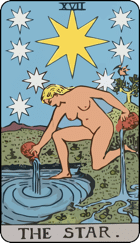
- The Moon: As a celestial symbol, the Moon in Tarot embodies the cycles of life, intuition, and the subconscious mind. It represents the ever-changing nature of existence, reminding us to embrace the ebb and flow of emotions and tap into our intuitive wisdom for guidance.
- The Sun: Radiating warmth, vitality, and illumination, the Sun card in Tarot symbolizes clarity, optimism, and enlightenment. It represents the divine source of light and life, reminding us to embrace our authentic selves and bask in the joy and abundance that comes from aligning with our true purpose.
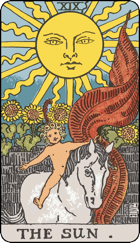
- The World: Depicting a figure surrounded by a wreath, the World card signifies wholeness, completion, and cosmic harmony. It represents the interconnectedness of all things and the integration of the earthly and celestial realms. This symbol invites us to recognize our place in the grand tapestry of the universe and embrace the unity of all existence.
- The Tower: While not directly connected to celestial bodies, the Tower card represents a celestial force of change and transformation. It depicts a lightning-struck tower, symbolizing the shattering of illusions and the breaking down of old structures. This celestial intervention serves as a catalyst for growth and the emergence of a new and more authentic self.
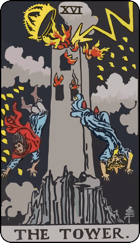
- The Hierophant: Although primarily associated with religious and spiritual teachings, the Hierophant card often incorporates celestial symbols such as stars or suns. It represents divine wisdom, tradition, and the bridge between earthly and celestial realms. This symbol signifies the guidance and spiritual teachings that connect us to higher truths and cosmic wisdom.
When interpreting Tarot symbols related to heaven and celestial bodies, it is important to consider the context of the reading and the specific cards’ placement and interactions within the spread. By engaging with these symbols, we invite a deeper understanding of our connection to the cosmos and gain insights into the higher forces at play in our lives. The exploration of these celestial Tarot symbols can lead to profound revelations, expanded consciousness, and a greater sense of purpose and alignment with the divine.
11. Tarot symbols of geometry, pattern, shape
Triangle, Square, Cube, Pentagram, Hexagon, Circle, Infinity Symbol, Rhombus
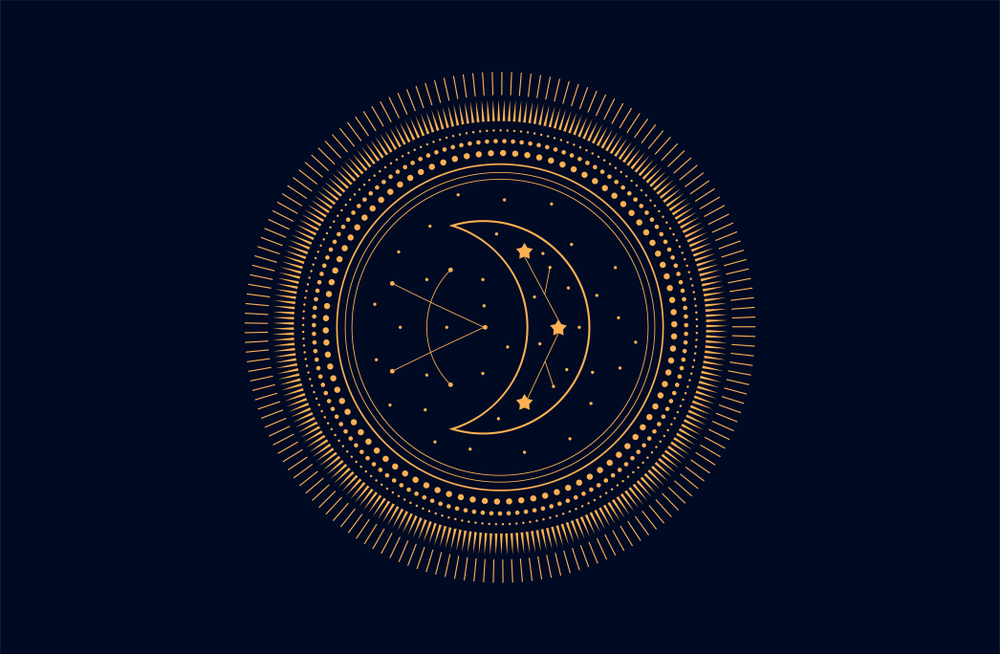
Geometry describes the truth of order, the law of the universe, the axioms of mathematics and science. The meaning often refers to the number of angles and make up its shape. The triangle is the perfect combination of all dualities; it is a spiritual desire (pointing up) or downward material. Squares represent material, strength, and stability. Boxy shape, perfect solids, symbolizing the universe and solid knowledge. Pentagrams are Tarot symbols of humanity, as well as good health, energy, magic, and protection. The six-pointed star, consisting of two alternating triangles, is a fusion – the harmony between the two extremes – and the “supremacy”. The circle is integrity and endless unity.
The rhombus or the intersection of the two circles intersect the mystic or hidden interior – the temple in the center of the universe. Infinity is a circle viewed from the side and tilted to form an infinity or horizontal number. It is a model of the sun that appears and forms its clear annual movement (called analemma), symbolizing eternity and duality in the endless circulation.
12. Tarot symbols of light and darkness
Lamp, shadow
In short, Light and Dark represent duality in every sense. In a card with day and night, lights and shadows, what is clearly revealed, what is hidden, covered or mysterious. Do not be caught in the thought that all light is good and darkness is bad.
Symbolism of Light in Tarot
The symbolism of light in Tarot holds profound significance, representing clarity, illumination, enlightenment, and spiritual awakening. Light is often depicted in Tarot cards as a beacon of truth, guiding seekers on their journey of self-discovery and understanding. It serves as a metaphorical representation of the inner wisdom, higher consciousness, and divine guidance available to those who embark on a spiritual path.
In Tarot, cards such as The Sun, The Star, and The Judgement card are prominent symbols of light. The Sun card radiates warmth, vitality, and joy, symbolizing the awakening of consciousness and the blessings of divine illumination. It signifies a time of clarity, growth, and optimism, reminding us to embrace our authentic selves and live in alignment with our true purpose.
The Star card embodies hope, inspiration, and guidance from above. It represents a celestial connection, reminding us to trust in a higher power and have faith in our journey. The Star’s gentle light illuminates the darkness, offering a guiding light that leads us towards a brighter future.
The Judgement card symbolizes spiritual awakening and self-reflection. It signifies a moment of illumination and realization, where one becomes aware of their true essence and the choices that shape their destiny. The light in this card represents the transformative power of self-discovery and the awakening of higher consciousness.
The symbolism of light in Tarot invites seekers to embrace the wisdom and guidance that comes from inner illumination. It encourages introspection, self-reflection, and a deeper understanding of one’s own journey. The presence of light in Tarot readings reminds us to seek truth, embrace enlightenment, and align our actions with higher principles and spiritual values.
When encountering Tarot cards that embody the symbolism of light, it is important to consider their placement and interactions within the reading. The light depicted in these cards serves as a reminder that even in challenging times, there is always a source of illumination and guidance available to navigate the path ahead.
Incorporating the symbolism of light in Tarot readings allows for a deeper exploration of inner wisdom, higher consciousness, and the transformative power of enlightenment. It encourages seekers to connect with their own inner light and embrace the divine guidance that leads to growth, clarity, and spiritual fulfillment.
Symbolism of Darkness in Tarot
The symbolism of darkness in Tarot is rich with meaning, representing the shadow aspects of human existence, mystery, introspection, and the transformative power that emerges from embracing the unknown. While darkness is often associated with fear and negativity, in Tarot, it serves as a catalyst for growth, self-reflection, and profound transformation.
Tarot cards such as The Moon, The Devil, and Death are significant symbols of darkness. The Moon card symbolizes the depths of the subconscious mind, intuition, and the hidden aspects of ourselves. It invites us to explore the mysteries within and confront the fears and illusions that may be holding us back from personal growth.
The Devil card represents the shadow side of human nature, representing our attachments, addictions, and negative patterns. It serves as a reminder to examine our own limitations, desires, and the illusions that may be influencing our choices. The Devil card challenges us to confront and transcend our inner demons to find freedom and liberation.
The Death card, despite its ominous name, represents transformation, letting go, and rebirth. It signifies the end of a cycle and the opportunity for renewal and growth. It invites us to embrace the transformative power of darkness, to release what no longer serves us, and to create space for new beginnings.
The symbolism of darkness in Tarot encourages seekers to confront their fears, delve into the unknown, and explore the depths of their being. It reminds us that within the darkness lies the potential for self-discovery, healing, and profound change. It is through acknowledging and integrating our shadow aspects that we can find wholeness and authenticity.
When encountering Tarot cards that embody the symbolism of darkness, it is crucial to approach them with an open mind and willingness to explore the deeper layers of our existence. These cards serve as mirrors, reflecting our fears, limitations, and the aspects of ourselves that may be hidden or repressed. They encourage us to face our shadows, embrace the unknown, and emerge transformed on the other side.
Tarot readings with dark symbolism present a rich chance for development, reflection, and self-discovery. It serves as a reminder that, even in the most trying circumstances, there is always the possibility of significant change and the emergence of a more genuine version of oneself. We set out on a journey of profound healing, integration, and empowerment by accepting the symbolism of darkness in Tarot.
13. Tarot symbols in color
In Tarot symbols, we combine colors with objects to synthesize a meaning, for example, a red hat can symbolize desire. Bright tones are elegant, gentle and delicate; Dark color is great, profound and powerful. The light is pure and healthy, while the deep tones only cause dirt, sickness, and compromise. According to the rainbow arrangement:
- Red: energy of life, desire, demand, passion, strength, courage, action, initiative, revolution, anger.
- Pink: love, friendship, beauty, emotion, sensitivity.
- Orange: important energy, pride, joy, nature, dynamic mind.
- Pigmentation: human condition, temporary, vulnerable.
- Yellow: wisdom, brightness, light, happiness, confidence, fear, cowardice, bitterness, deception.
- Golden needle: harvest, wealth, glory, wisdom, pure beauty, truth, perfection, indestructibility, greed.
- Green: hope, growth, nature, vegetation, healing, recovery, spring, jealousy, envy, bruising, laziness.
- Blue: truth, spirituality, calmness, peace, serenity, loyalty, heavenly, cold, melancholy, depression.
- Purple: dignity, wisdom, mysticism, higher consciousness, royalties, luxury, power, pride, radiance, repentance.
- Brown: soil, firm, practical, maintenance, modest, rest, decay, depression.
- Gray: neutrality, balance, reconciliation, penance, poverty, indifference, rigidity, sadness, loneliness.
- Black: Negative, mysterious, silent, eternal, knowledge, transformation, weakness, inertia, despair, ignorance, evil, mortality.
- White: pure, innocent, simple, holy, moral, purifying, truth, truce, ghosts, infertility, weakness.
- Silver: chastity, reflection, imagination, righteous beliefs, nobility, corruption.
Tarot symbols in color add a layer of depth and meaning to the interpretation of Tarot cards. Each color carries its own symbolism and energy, influencing the overall message and significance of the cards. By exploring the Tarot symbols in color, we gain a greater understanding of the emotional, energetic, and spiritual aspects conveyed within the readings.
Colors in Tarot can evoke various emotions, represent different elements, and convey specific energies. For example, the color red often symbolizes passion, vitality, and action. When it appears in Tarot cards, it can signify strong emotions, desire, or the need for bold decision-making. Blue, on the other hand, represents calmness, intuition, and communication. Tarot cards with predominant blue hues may indicate a need for introspection, listening to one’s inner voice, or engaging in effective communication.
Each color carries its own associations and can alter the interpretation of Tarot cards. Green is often linked to growth, abundance, and healing, while yellow signifies intellect, optimism, and clarity. Orange represents creativity, enthusiasm, and vitality, while purple embodies spirituality, intuition, and transformation.
Interpreting Tarot symbols in color involves considering the color combinations, contrasts, and the overall ambiance created by the color palette within the cards. The colors chosen by Tarot artists and designers are intentional and can convey subtle nuances or reinforce the broader themes of the cards.
By paying attention to the Tarot symbols in color, readers can gain insights into the energetic and emotional dimensions of the readings. Understanding the symbolism of colors enhances the depth of interpretation, allowing for a more nuanced understanding of the messages conveyed by the Tarot cards.

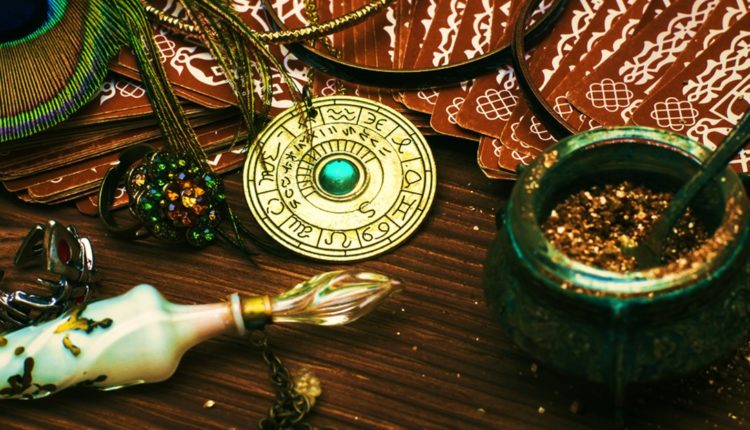
Fantastic site. Plenty of useful info here. I’m sending it to a few friends ans also sharing in delicious. And certainly, thanks for your sweat!